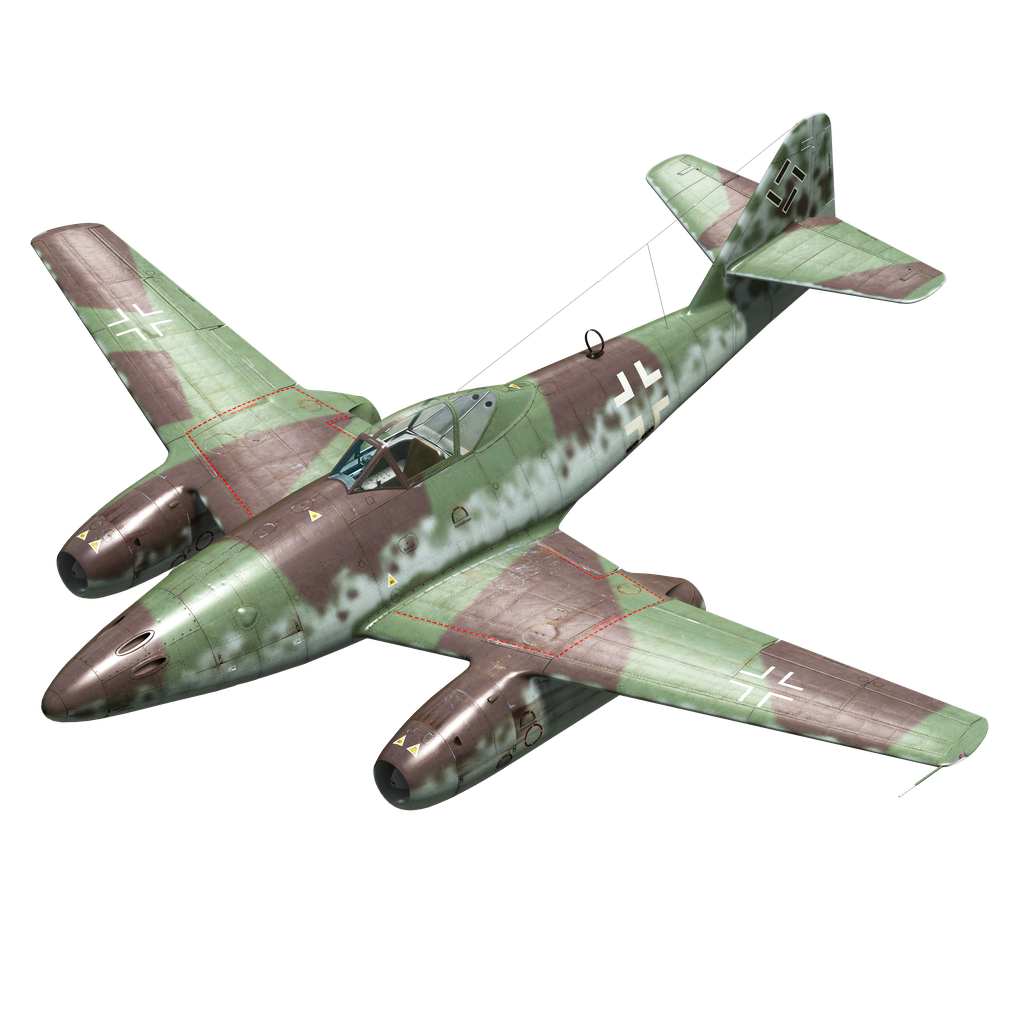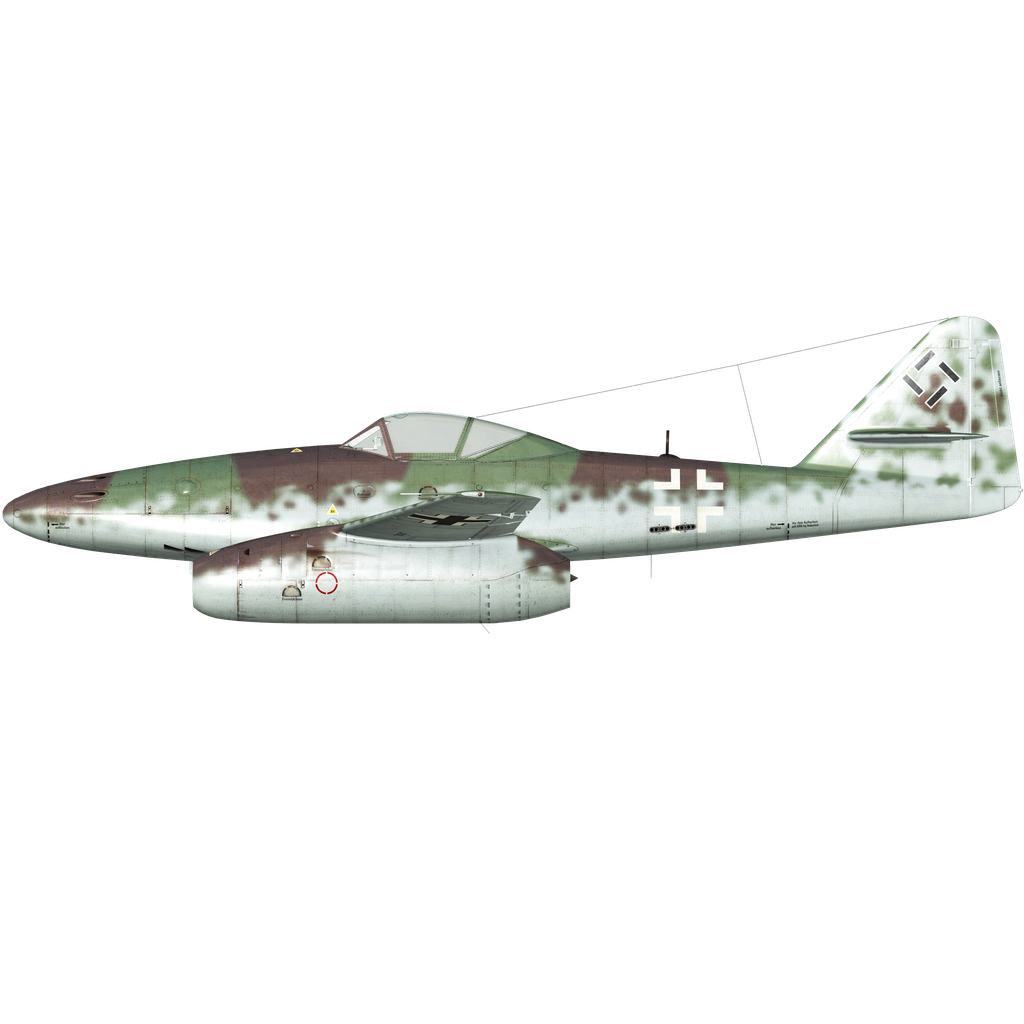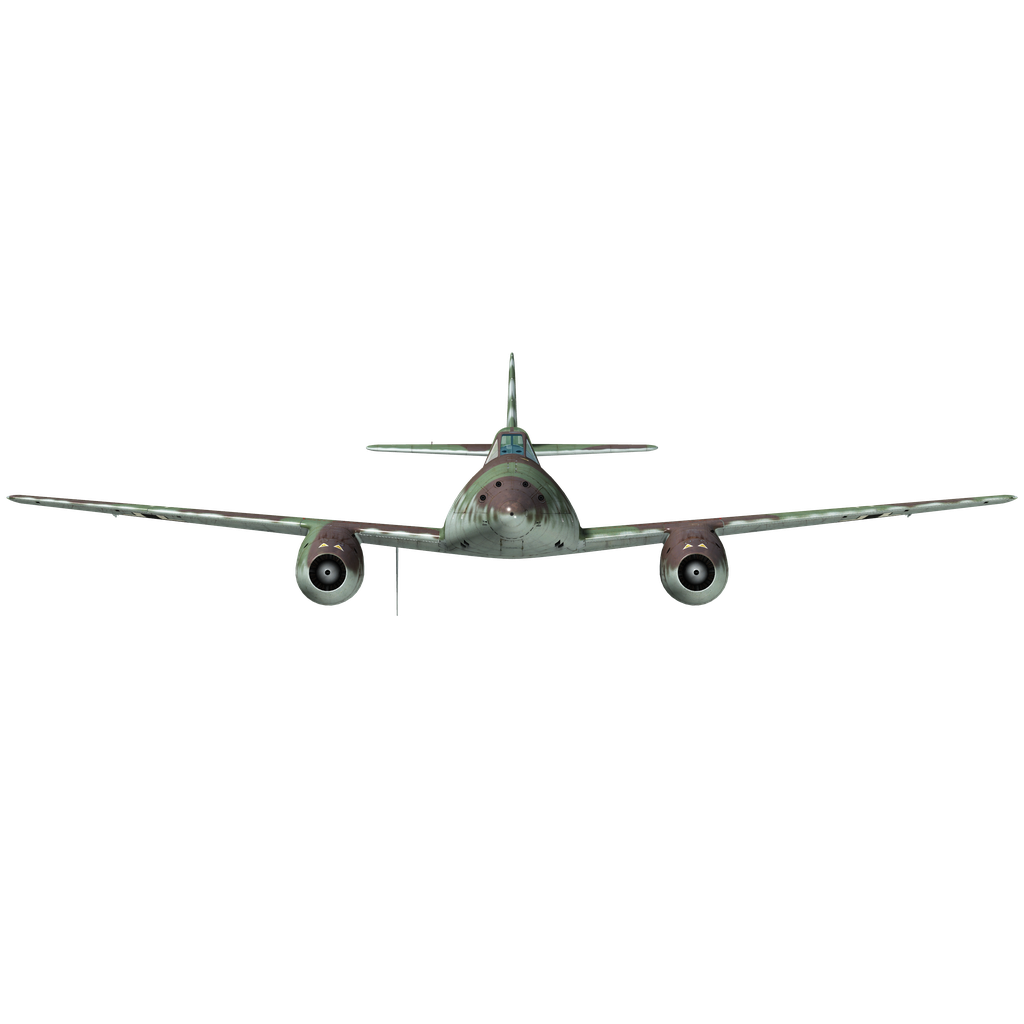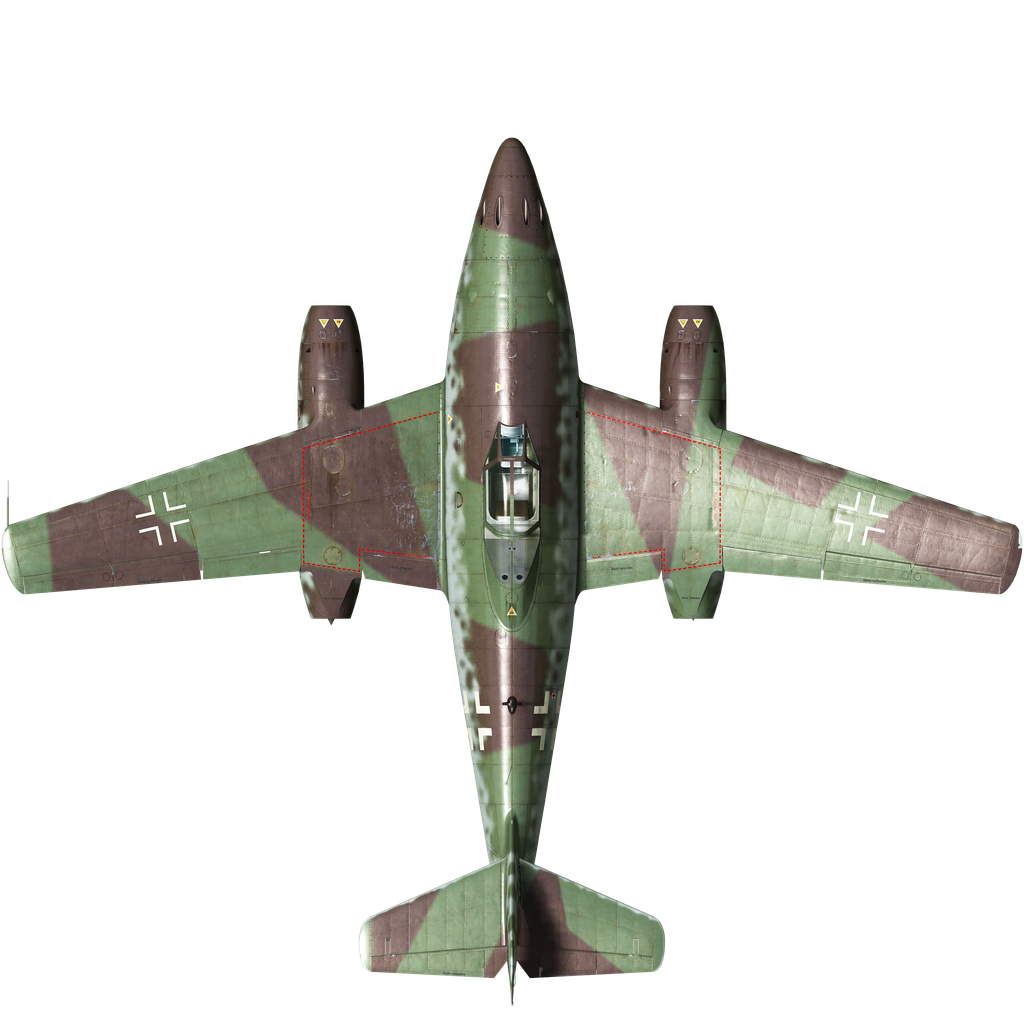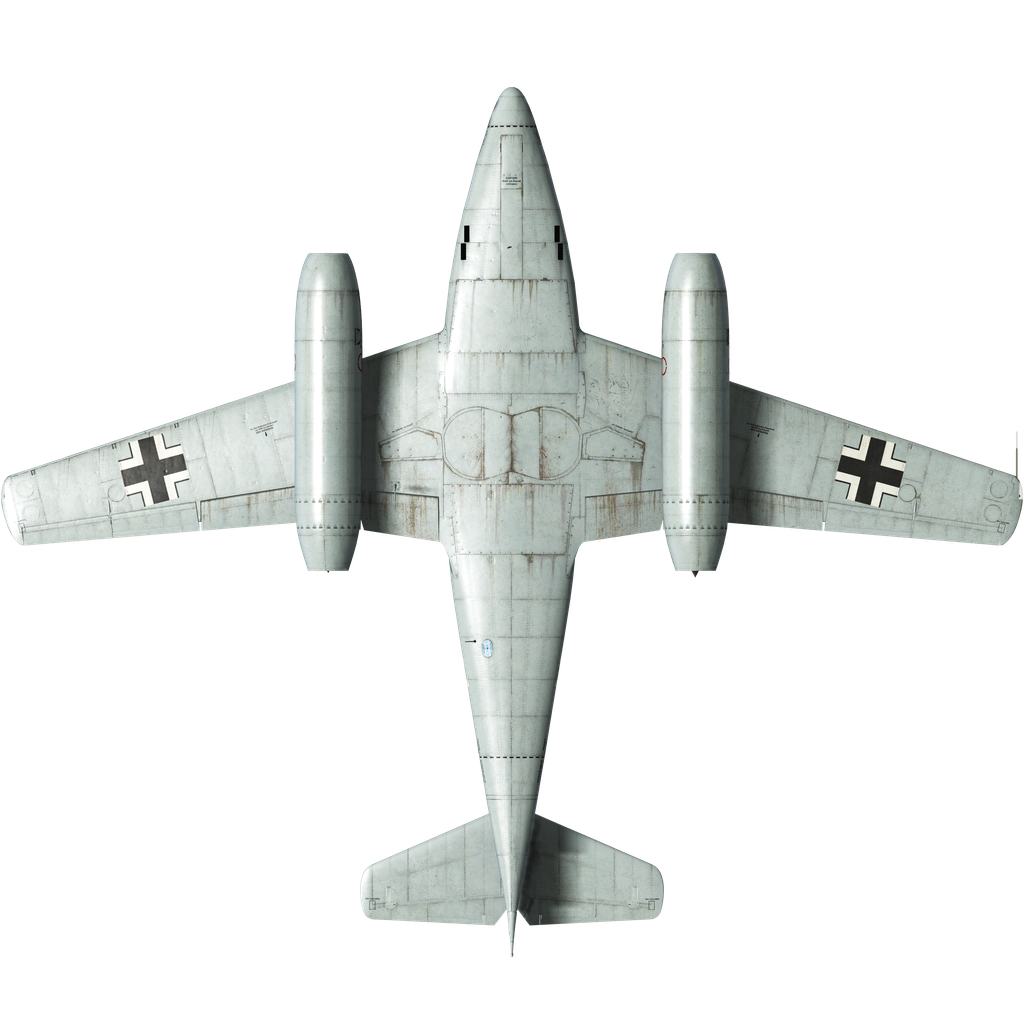Development of this interceptor began in 1938 under the designation P1065. In 1942, the first operational Jumo-004A engine became available, and the prototype Me 262 V3 with these engines took flight on July 18, 1942. The first production version of the Me 262 A-1a, known by the unofficial nickname "Swallow," was delivered to the test team in July 1944. It was believed at the time that Hitler's demand that the aircraft be changed from an interceptor to a fast fighter-bomber had adversely affected the pace of production.
The Me 262 A was a single-seat all-metal monoplane with 2 turbojet engines. The fuselage was triangular in cross-section, with the width of the base of the triangle being much greater than the height. This shape was chosen because of the need to accommodate four fuel tanks and main gear wheel storage bays. In combination with a low wing, the problem of reducing the harmful interference between the arrow-shaped wing and the fuselage was solved at the same time. The choice of such a wing was explained not by the desire to improve speed characteristics, but by the need to provide the required margin of longitudinal stability of the fighter. The engine type Jumo-004B-1 (later B-2 and B-3) was equipped with a small two-stroke Riedel starter. A 17-liter gasoline reserve was used as fuel for the starter. Apart from this reserve, all other fuel was stored in the fuselage.
-
A-1a/U1: 3 were built. Armament: two 20 mm MG 151/20 cannons (146 rounds each) and two 30 mm MK-103 cannons (72 rounds each);
-
A-1a (Me 262V BK-5): prototype, with one 50 mm MK-214A cannon;
-
A-1b: with rails for twenty-four 55 mm R4M unguided rockets. It is said that fighters of this variant shot down 45 bombers and 15 enemy fighters;
-
A-2a "Sturmvogel": fighter-bomber variant. In addition to the standard armament, it carried one 500 kg or two 250 kg bombs, which were dropped from a dive at an altitude of up to 1000 meters;
-
A-2a/U1: fighter-bomber variant. Two cannons removed, TSA low-level bombing sight installed. 2 built;
-
A-2a/U2: 1 prototype fighter-bomber without cannon armament, with a second crew member and Lotfe 7 gyrostabilized sight installed;
-
A-5a: reconnaissance plane, two 30 mm cannons, and two cameras. One 600-liter or two 300-liter drop tanks could be attached to the bomb racks. A small series was produced, the aircraft was designated Me 262 A-1a/U3.
Anglo-American aviation was a complete success against the Me 262. The reason for this was the suddenness of their appearance since the speed of jet aircraft was much higher than that of piston aircraft. Initially, jet fighters attacked bomber formations in small groups of two or three planes: after shooting down several planes, they broke up the formation and left the fight at high speed. However, the Allies were able to defend themselves with concentrated machine-gun fire and a new tactic of sharp maneuvering at a loss of speed, which the Me 262 pilots could not afford. According to some reports, 150 enemy planes were shot down with the loss of 100 Me 262 As for various reasons.
Fighter-bombers were used to bomb troops and airfields on the Western Front. Allied fighters and anti-aircraft guns offered little resistance to the jet bombers. Me 262 pilots usually flew solo, approaching targets at 8,000 meters during the day, dropping bombs from a shallow dive, and returning home at high speed, beyond the reach of piston-engine fighters.
Pilots found that the Me 262 A-1 was much easier to control than the Luftwaffe's main fighter of the time, the Bf 109 G. Acceleration characteristics were significantly worse than those of propeller-driven aircraft, but the Me 262 had a very high dive speed. The Jumo 004B engines caused many problems: the engine control lever had to be moved very smoothly, otherwise, there was a high probability of the engine catching fire or stalling.
Sources used:
1. W. Creen "The Warplanes of the Third Reich", Galahad Books, 1986
2. "Wings of the Luftwaffe" Translation of W. Creen's book "Combat Airplanes of the Third Reich" by A. Firsov, 1993.
3. "Materials from the site airwar.ru
